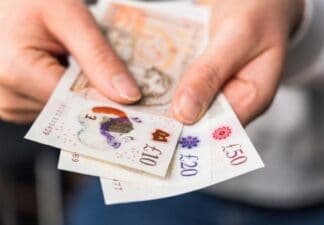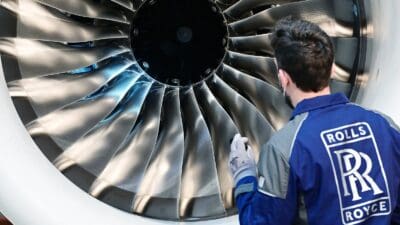The ability to calculate the reliability of dividends is absolutely crucial for investors, not only for evaluating the income generated from your portfolio, but also to avoid a share-price collapse from stocks where payouts are slashed.
There are a variety of ways to judge future dividends, and today I am looking at BAE Systems (LSE: BA) (NASDAQOTH: BAESY.US) to see whether the firm looks a safe bet to produce dependable payouts.
Forward dividend cover
Forward dividend cover is one of the most simple ways to evaluate future payouts, as the ratio reveals how many times the projected dividend per share is covered by earnings per share. It can be calculated using the following formula:
Forward earnings per share ÷ forward dividend per share
City analysts expect BAE Systems to punch in a dividend of 20.4p per share for 2013, with earnings per share of 42.7p forecast for this period. This produces dividend cover of 2.1 times prospective earnings, just above the safety threshold of 2 times.
Free cash flow
Free cash flow is essentially how much cash has been generated after all costs and can often differ from reported profits. Theoretically, a company generating shedloads of cash is in a better position to reward stakeholders with plump dividends. The figure can be calculated by the following calculation:
Operating profit + depreciation & amortisation – tax – capital expenditure – working capital increase
BAE Systems saw free cash flow come in at £3.1bn last year, up massively from £989m in 2011. Tax costs ticked up last year, to £296m from £211m, while capex also rose to £293m from £268m. However, this was more than offset by a rise in operating profit — this edged to £1.64bn from £1.58bn — and more prominently by swings in working capital. This decreased by £1.38bn in 2012 versus an £863m increase in 2011.
Financial gearing
This ratio is used to gauge the level debt a company carries. Simply put, the higher the amount, the more difficult it may be to generate lucrative dividends for shareholders. It can be calculated using the following calculation:
Short- and long-term debts + pension liabilities – cash & cash equivalents
___________________________________________________________ x 100
Shareholder funds
BAE Systems’ gearing ratio remains meaty, although it dropped to 111.1% last year from 132.9% in 2011. Total debt dipped to £2.99bn from £3.64bn, while cash and cash equivalents rose to £3.36bn from £2.14bn. These improvements helped the ratio improve despite a reduction in shareholder equity, to £3.77bn from £4.3bn.
Buybacks and other spare cash
BAE Systems is currently operating a huge share buyback scheme, in February initiating a £1bn repurchasing programme to be strung over a three-year period. Full execution is dependent upon the successful negotiation with the Royal Saudi Air Force concerning Salam Typhoon price escalation negotiations, however.
Like all defence plays, the firm is expected to continue ploughing gargantuan amounts of capital across its wide operations portfolio. As well, BAE Systems is also looking to continue getting its feet wet in the M&A arena, even though a deal to acquire ship maintenance and repair provider Marine Hydraulics International fell through at the start of the month.
Dividends to keep on firing
I believe that BAE Systems is an excellent pick for investors seeking steady income, buttressed by strong dividend cover and cash flows. The company is investing heavily to stay ahead of the pack and boost growth, while diversification into non-Western markets is also opening new earnings avenues.
As well, the company has an excellent record of on-year dividend increases, and analysts reckon this year’s payout will yield 4.8% in 2013, well ahead of the 3.3% FTSE 100 average.
Electrify your dividend income with the Fool
If you already hold shares in BAE Systems, and are looking for other lucrative payout plays to really propel the income from your stock portfolio, I recommend you take a look at this exclusive, in-depth report about another FTSE 100 high-income opportunity.
The blue chip in question offers a prospective dividend yield comfortably north of 5%, and has been declared “The Motley Fool’s Top Income Stock For 2013“! Click here to download the report now — it’s absolutely free and comes with no further obligation.
> Royston does not own shares in BAE Systems.







